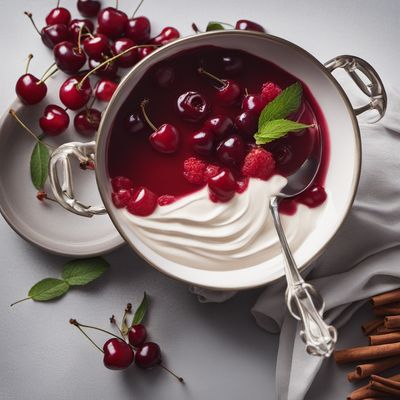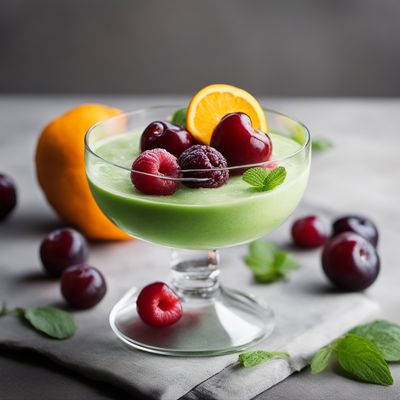
Ingredient
Sour cherries
Tart Delights: Exploring the World of Sour Cherries
Sour cherries are smaller and more acidic compared to sweet cherries. They have a bright red color and a firm yet juicy texture. The taste of sour cherries is tart and tangy, with a hint of sweetness. They are commonly used in pies, jams, sauces, and as a topping for desserts.
Origins and history
Sour cherries are native to Europe and Western Asia. They have been cultivated for centuries and are highly valued for their unique flavor and culinary versatility. Sour cherries have also played a role in various cultural traditions and folklore, symbolizing love, fertility, and good fortune.
Nutritional information
Sour cherries are low in calories and fat. They are a good source of vitamin C and dietary fiber. Sour cherries also contain antioxidants and anthocyanins, which have been linked to various health benefits.
Allergens
May contain allergens for individuals with a sensitivity to cherries.
How to select
When selecting sour cherries, look for fruits that are plump, firm, and brightly colored. Avoid cherries that are soft, bruised, or have any signs of mold. Additionally, check the stems to ensure they are fresh and green.
Storage recommendations
To maintain the freshness of sour cherries, store them in the refrigerator in a perforated plastic bag or airtight container. They can also be pitted and frozen for long-term storage. Use them within a few days for the best flavor and texture.
How to produce
Sour cherries can be grown in home gardens or orchards. They require a temperate climate and well-drained soil. Planting sour cherry trees or bushes and providing proper care, including regular watering and pruning, can result in a bountiful harvest of fresh sour cherries.
Preparation tips
Sour cherries can be used in a variety of culinary creations. They are commonly used in pies, tarts, and cobblers, where their tartness balances the sweetness of other ingredients. Sour cherries also make delicious jams, jellies, and sauces. They can be added to salads, marinades, or used as a topping for ice cream or yogurt.
Substitutions
Sweet cherries or other tart fruits like cranberries can be used as substitutes for sour cherries. However, keep in mind that the flavor and texture may differ slightly.
Culinary uses
Sour cherries are widely used in European and Middle Eastern cuisines. They are a key ingredient in traditional dishes like cherry strudel, cherry soup, and cherry pierogi. Sour cherries are also popular in American cuisine, particularly in desserts like cherry pie and cherry cobbler.
Availability
Sour cherries are commonly available in regions with a temperate climate, including Europe, North America, and parts of Asia. They are cultivated in countries such as Poland, Germany, the United States, and Turkey.
More ingredients from this category
Recipes using Sour cherries » Browse all

Cuban Chocolate Cherry Cake
Tropical Delight: Cuban Chocolate Cherry Cake

Creamy Cherry Soup
Velvety Delight: Creamy Cherry Soup

Vişneli Baklava with a Twist
Cherry Delight Baklava: A Sweet and Tangy Turkish Treat

Viennese Black Forest Pudding
Decadent Viennese Chocolate Delight

Cretan Twist on Manchester Tart
Cretan Delight Tart: A Fusion of British and Cretan Flavors

Basque-style Reindling
Basque-inspired Sweet Bread with a Twist

German-style Spongata
Black Forest Spongata: A German Twist on an Italian Classic

Classic Cherry Pie
Tart and Juicy: A Classic Cherry Pie Recipe

Extremaduran-style Fruit Sorbet
Fruity Delight: Extremaduran-inspired Sorbetes

Cherry Bakewell Tart
Delightful Almond-Cherry Tart

Wisconsin Kringle Recipe
Flaky Delights: Homemade Wisconsin Kringle

Sfinci di San Giuseppe
Heavenly Italian Cream Puffs: Sfinci di San Giuseppe

